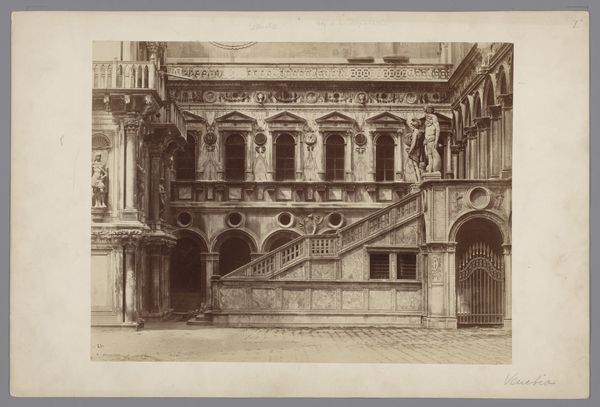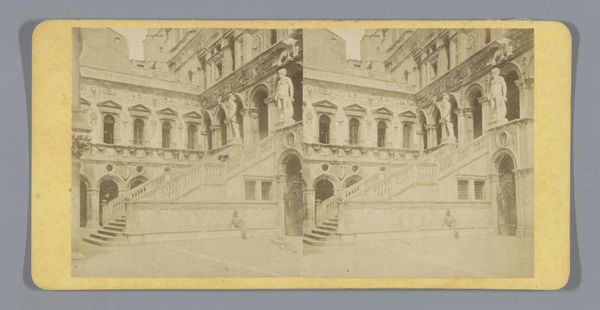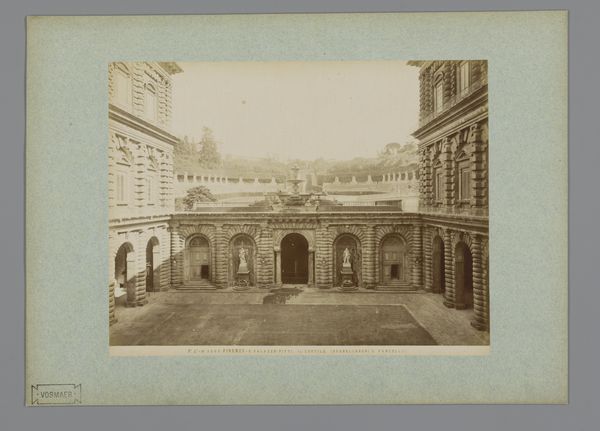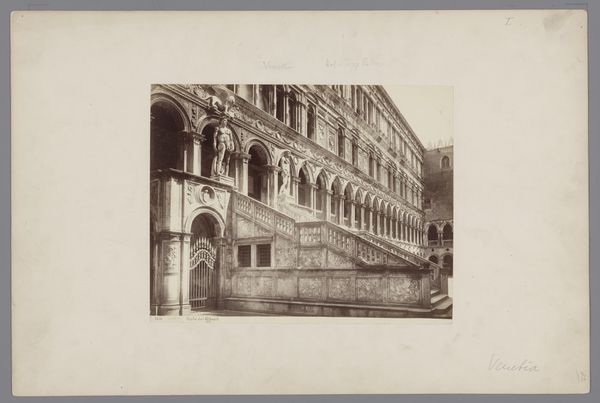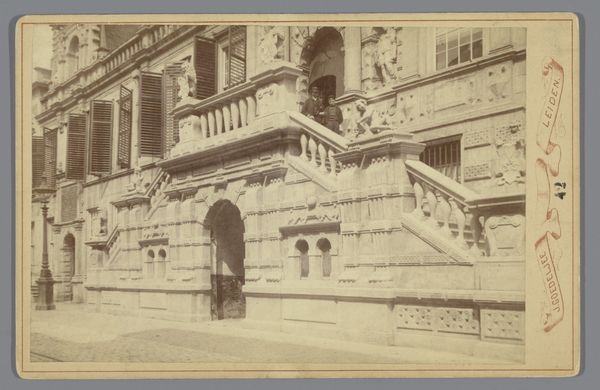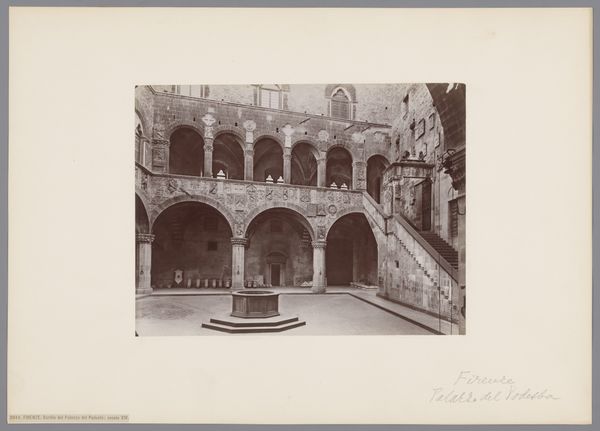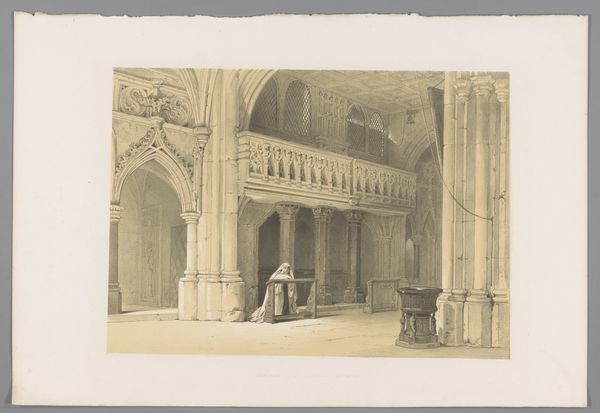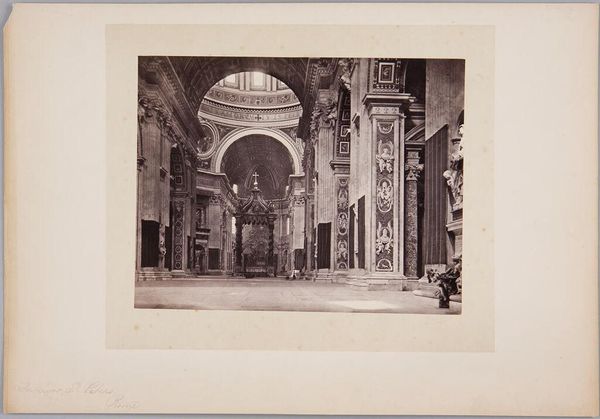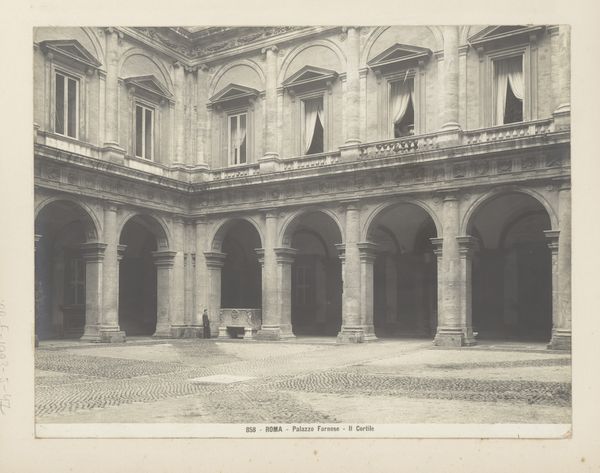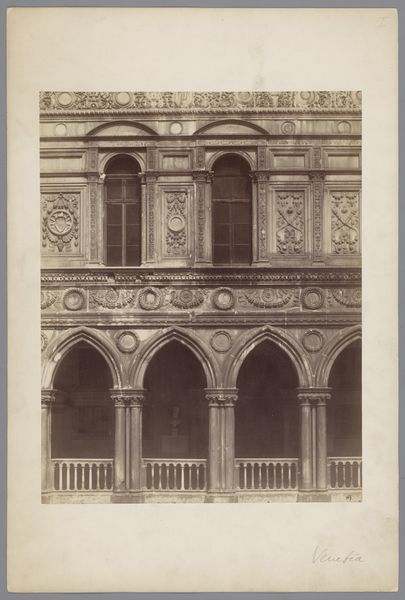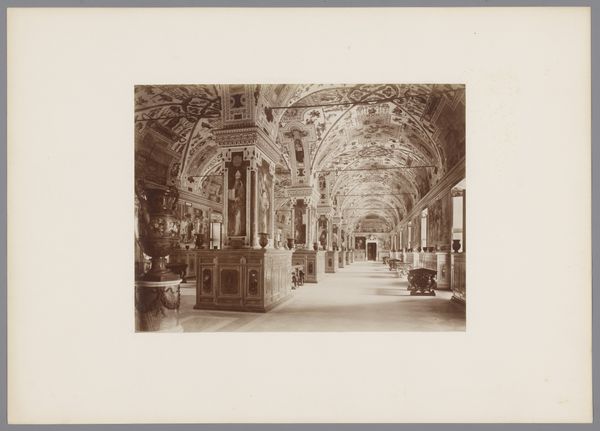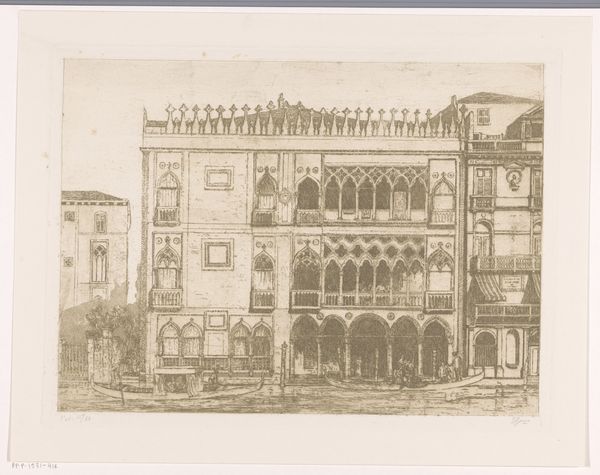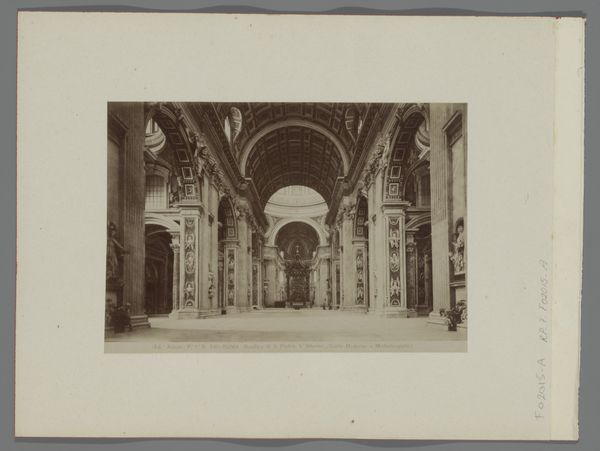
Scala dei Giganti op de binnenplaats van het Dogepaleis te Venetië, Italië 1852 - 1893
0:00
0:00
Dimensions: height 305 mm, width 441 mm
Copyright: Rijks Museum: Open Domain
Editor: Here we have Carlo Ponti's gelatin-silver print, "Scala dei Giganti op de binnenplaats van het Dogepaleis te Venetië, Italië," dating somewhere between 1852 and 1893. It's quite an imposing architectural shot. What strikes me is how solid and permanent it all looks, yet it’s captured through such a fragile medium. What do you make of it? Curator: The solidity is deceptive, isn’t it? As a photograph, a gelatin-silver print, its existence hinges on specific material conditions, a very particular process of labor. The Doge's Palace represents the historical and political power structures of Venice, power derived from its economic infrastructure and international trade networks. But consider what Ponti is doing: using the *new* technology of photography, itself a product of industrial and chemical advancements, to document the decaying architecture, the ossified social order, of old Venice. Editor: So the photograph isn’t just *of* something, it’s commenting on it through the materials and process itself. The tension between permanence and fragility that I perceived now seems much more deliberate. Curator: Precisely. And the seemingly objective lens is itself a product, consider how its development was funded and driven by early capitalist ventures! Think of the laborers in the darkroom, the mining of silver... what social relations do we find implicated in this image’s very existence? Editor: That shifts my perspective. It’s no longer just a picture of a grand staircase, but a record of industry, labor and commerce. Thank you, that's really fascinating. Curator: Indeed, seeing how the material conditions of artmaking reflect and shape our understanding of the world is crucial. It invites us to consider what other histories are literally embedded in the object itself.
Comments
No comments
Be the first to comment and join the conversation on the ultimate creative platform.
